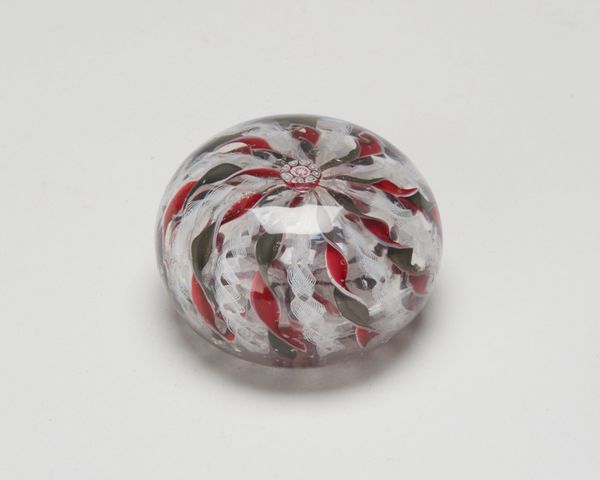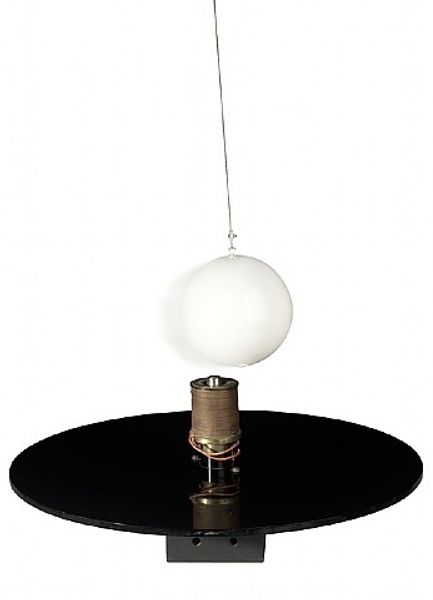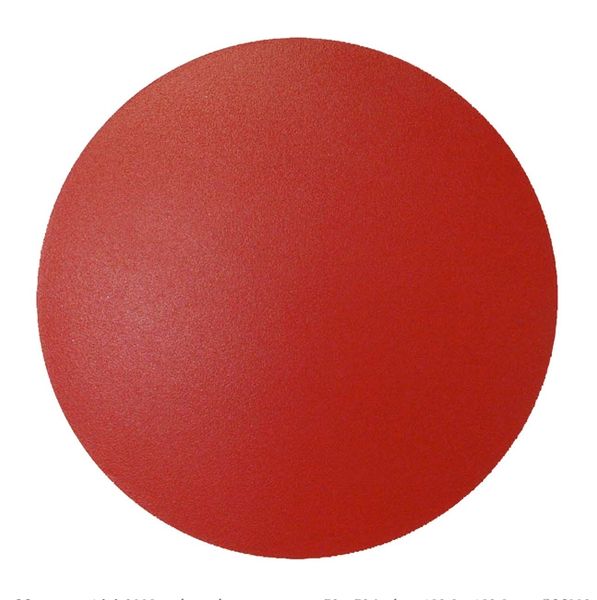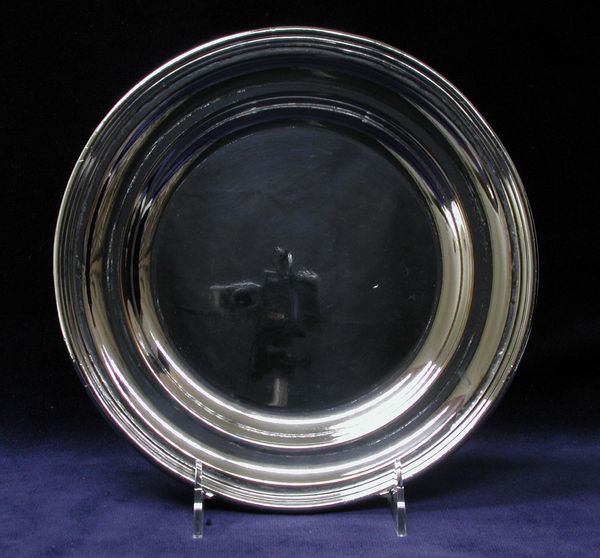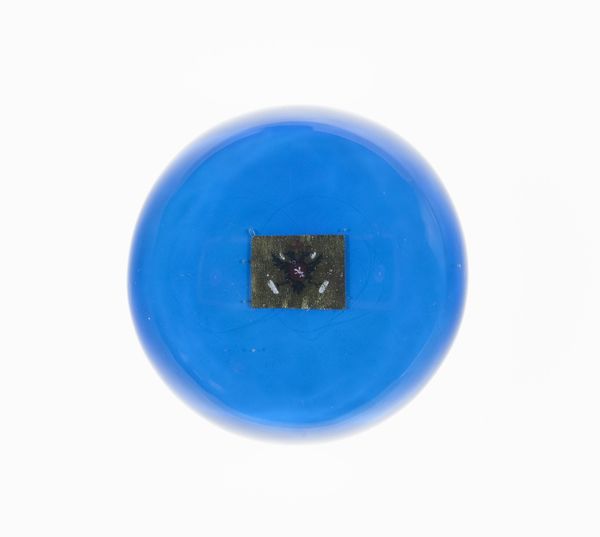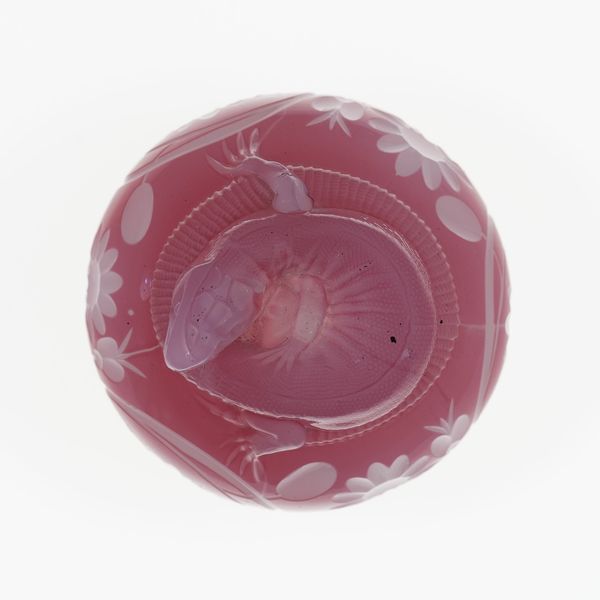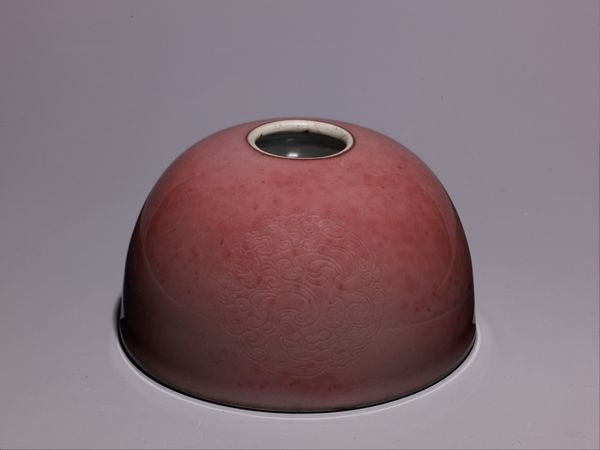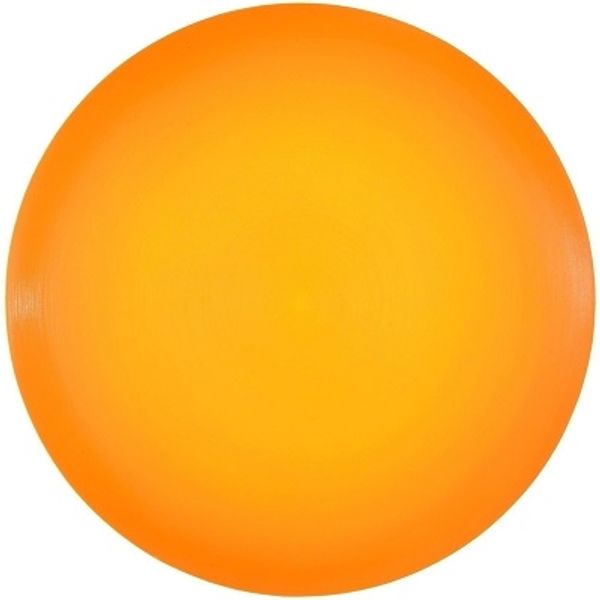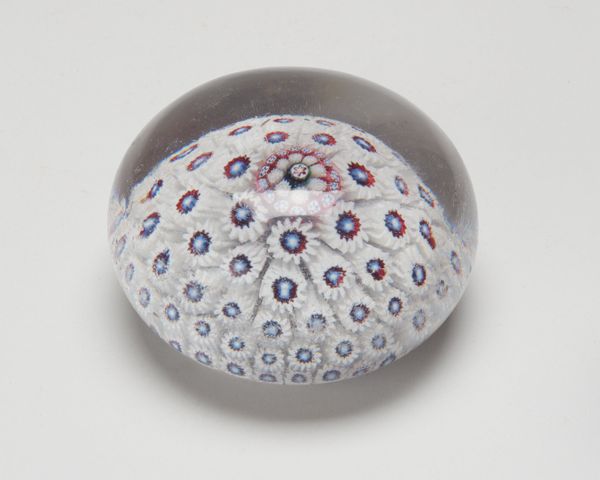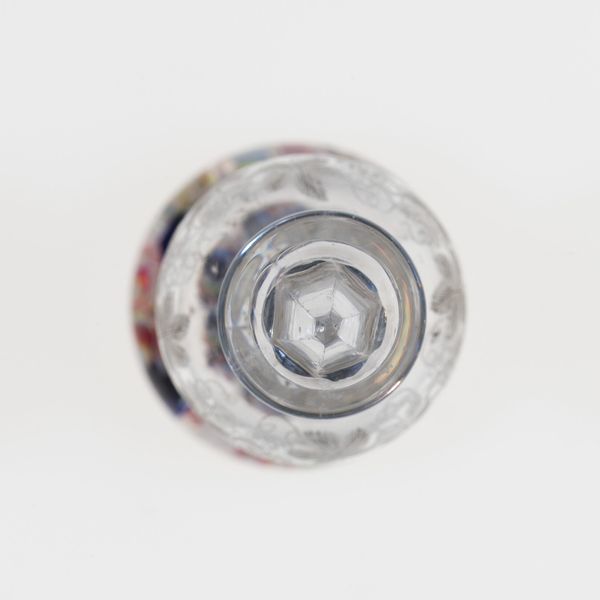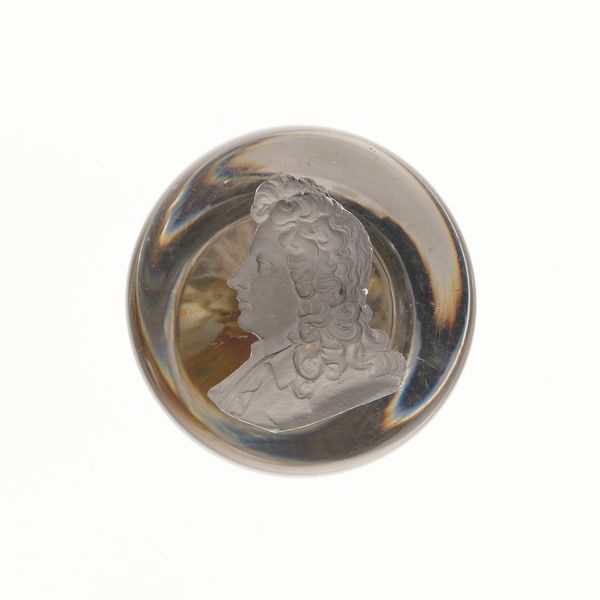
metal, sculpture
#
round frame
#
clear graphic shape
#
conceptual-art
#
3d printed part
#
metal
#
product displayed
#
3d printing
#
plastic material rendering
#
virtual 3d design
#
abstract
#
form
#
product design photgrpaphy
#
3d shape
#
geometric
#
sculpture
#
metallic object render
Copyright: Gio Pomodoro,Fair Use
Curator: Standing before us is Gio Pomodoro's "For Alessi" created in 1968, a work conceived as a product design. It's fascinating to see sculpture operating so deliberately within the realm of the commercial. Editor: It certainly grabs the eye, doesn't it? The immediate impression is one of sleekness. The chrome-like surface reflects its surroundings, and the simple sphere is interrupted only by minimal red details. The form itself has a curious visual balance. Curator: Absolutely. It’s a testament to the ambition of Alessi, a company that actively sought collaborations with avant-garde artists and designers. This sphere challenges the typical boundaries between fine art and industrial design. Editor: And yet, beyond its social and economic implications, there's something very satisfying about the clean geometry. It exemplifies a reduction to pure, essential form. The lines flow with uninterrupted grace around the whole sphere. Curator: Exactly! Alessi believed that design could improve people's lives. "For Alessi," a product that wasn't necessarily meant to be revolutionary in function but elevated everyday aesthetics, served as a social experiment and the democratization of good design. Editor: Though it appears so elementary in shape, that singular plane dividing the whole brings focus to surface treatment, highlights materiality, and adds the dynamic of volume against the ambient space. Curator: Pomodoro's exploration extends into a commentary on consumer culture and art's evolving role within it. It’s an object of daily life, and by putting it on display in museums and galleries, the product assumes the role of high art. Editor: Indeed, even its pristine reflective surface functions on more than one level—both practical as well as offering constant perspectival shifts of the entire display setting. "For Alessi" invites active viewing, a constant dialogue with the environment it inhabits. Curator: Looking at Pomodoro's sleek object, one appreciates the role played by Alessi as the visionary that championed blurring art and manufacturing boundaries. Editor: Its simplicity and geometric structure provide a sense of calm and permanence while inviting consideration of negative space as a tactile element of composition.
Comments
No comments
Be the first to comment and join the conversation on the ultimate creative platform.
